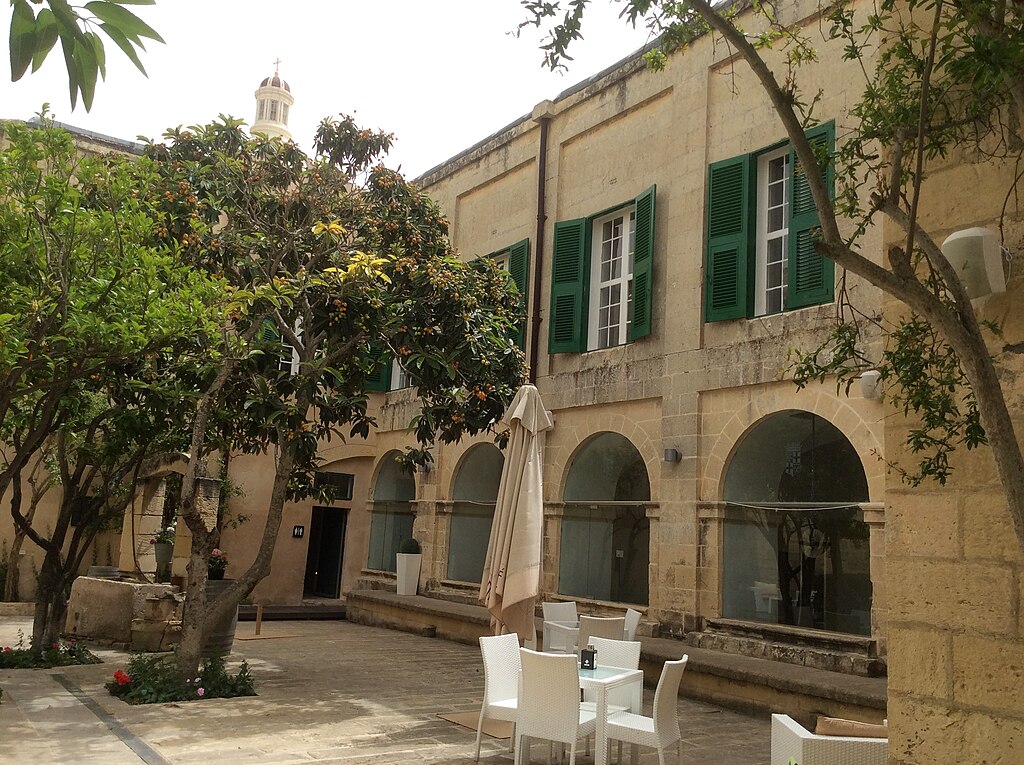Wignacourt Museum
Museum in Rabat

The Wignacourt Museum stands as one of Malta's most distinguished cultural landmarks, blending art, history, and faith within the walls of a magnificent 18th-century Baroque palace. Named after Grand Master Alof de Wignacourt, who ruled the Maltese Islands from 1601 to 1622, the museum occupies a building originally constructed in 1749 for the Chaplains of the Order of St. John. Its elegant architecture, rich collections, and deep spiritual associations make it a must-visit destination for those seeking to understand Malta's layered past. The museum serves not only as an artistic repository but also as a gateway to one of the island's most sacred sites — St. Paul's Grotto, where tradition holds that the Apostle Paul found refuge following his shipwreck on Malta.
A Sacred and Historical Legacy
The Wignacourt Museum's historical importance extends well beyond its walls. Beneath the building lies a remarkable network of underground hypogea, Roman and early Christian tombs, and World War II-era air raid shelters, providing visitors with a tangible connection to different epochs of Maltese history. These subterranean chambers link directly to St. Paul's Grotto, one of the most revered Christian sites on the island. The grotto and its surrounding catacombs have long drawn pilgrims and travelers, and the museum's structure seamlessly integrates this sacred heritage into a broader cultural experience. Walking through these underground passages feels like descending through time — from the early Christian era to the modern age of conflict and resilience.
Art, Artifacts, and Architectural Beauty
The museum itself spans three levels, each offering unique treasures that reflect Malta's artistic and religious evolution. The main floor houses a splendid art gallery, featuring paintings by some of Malta's most celebrated artists, including Mattia Preti, Antoine de Favray, and Francesco Zahra. Their works illuminate the Baroque era's passion for drama, emotion, and devotion. In addition to paintings, the galleries contain an impressive array of sculptures, antique silverware, coins, pottery, maps, and relics — each carefully curated to showcase Malta's vibrant artistic and cultural narrative. Among the museum's more distinctive pieces is an altar once used on Hospitaller galleys, offering a rare glimpse into the maritime and religious traditions of the Order of St. John.
The Building and Its Surroundings
Beyond its collections, the Baroque building itself is an artwork of historical charm. With its stately façade, vaulted ceilings, and graceful stone staircases, the structure captures the refined architectural spirit of 18th-century Malta. The museum also features a tranquil garden and a small chapel that once served as a place of private devotion for the chaplains of the Order. These quiet spaces offer visitors moments of reflection amidst the wealth of art and history on display. Together, the galleries, grottoes, and gardens create a holistic experience that connects the spiritual and the cultural, the sacred and the artistic — all under one roof.
The Wignacourt Museum appears in our Complete Guide to Visiting Rabat!
This website uses affiliate links which may earn a commission at no additional cost to you!
Visiting Wignacourt Museum
Monday to Saturday, 9:00 AM – 5:00 PM (last entry at 4:30 PM); closed on Sundays and public holidays.
Nearby Attractions
- Basilica of Saint Paul, Rabat (0.0) km
Basilica in Rabat - Cosmana Navarra House (0.1) km
Historic Building in Rabat - Catacombs of St. Paul (0.2) km
Church and Historic Site in Rabat - Domus Romana, Rabat (0.4) km
Roman Site in Mdina - Howard Gardens, Mdina (0.4) km
Gardens in Mdina - Mdina Ditch Gardens (0.4) km
Gardens in Mdina - Walls of Mdina (0.4) km
City Walls in Mdina - Greeks Gate, Mdina (0.5) km
City Gate in Mdina - Main Gate of Mdina (0.5) km
City Gate in Mdina - Mdina Dungeons Museum, Mdina (0.5) km
Museum in Mdina


